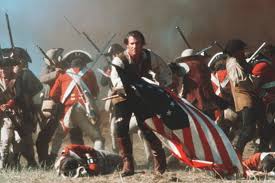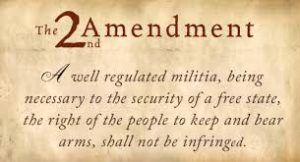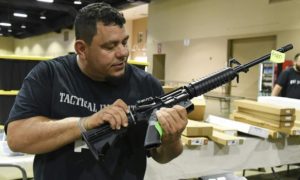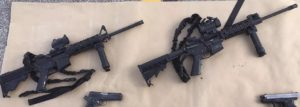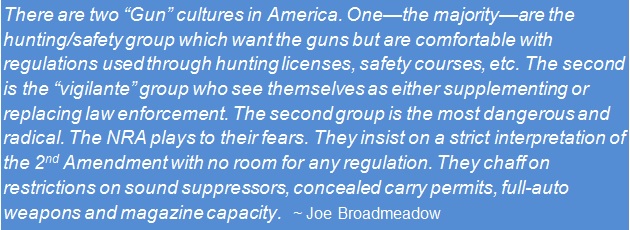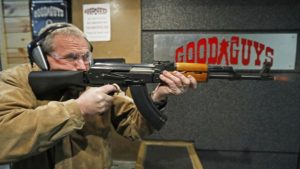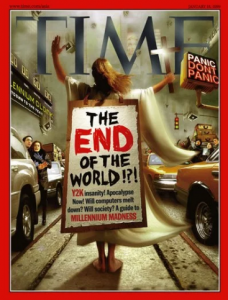 Wow! How fast did two decades fly by? Seems like yesterday we were freaking over the new millennia’s Y2K impending doom of driving a dastardly internet chain reaction filled with devastating quirks and quarks through the hearts of our hard drives. Well, that never happened. As Trump says, it was fake news – all lies – a terrible, terrible hoax. Fortunately, it gave me twenty new years to polish my craft and plot my course. So, here’s what’s up with Garry Rodgers’ writing for 2020.
Wow! How fast did two decades fly by? Seems like yesterday we were freaking over the new millennia’s Y2K impending doom of driving a dastardly internet chain reaction filled with devastating quirks and quarks through the hearts of our hard drives. Well, that never happened. As Trump says, it was fake news – all lies – a terrible, terrible hoax. Fortunately, it gave me twenty new years to polish my craft and plot my course. So, here’s what’s up with Garry Rodgers’ writing for 2020.
2019 was a productive year in the writing room. I penned and shipped about fifty feature articles for my daughter’s agency. None changed the world but they helped pay the bills. I also managed to scrape together personal blog posts for every second Saturday morning on DyingWords.net. Some pieces took a lot of research and I learned new things. That’s part of the many happy returns from blogging.
 As well, I completed two full-length book manuscripts. One is a historical non-fiction work titled Sun Dance – Why Custer Really Lost the Battle of the Little Bighorn. It’s now with an imprint of Rowman & Littlefield Publishers, and we’ll see where that goes. The other is a based-on-true-crime story called From The Shadows. I was going to release it on Amazon this month, but put things on hold till January as I didn’t want it getting smothered in the Christmas market.
As well, I completed two full-length book manuscripts. One is a historical non-fiction work titled Sun Dance – Why Custer Really Lost the Battle of the Little Bighorn. It’s now with an imprint of Rowman & Littlefield Publishers, and we’ll see where that goes. The other is a based-on-true-crime story called From The Shadows. I was going to release it on Amazon this month, but put things on hold till January as I didn’t want it getting smothered in the Christmas market.
I’m also two-thirds through writing Beside The Road. It’s another based-on-true crime read in the same series as From The Shadows, Under The Ground and In The Attic. These formats have worked well in reader reviews and the sales department. So, if it ain’t broke, I’m not gonna fix it. I have more plots planned which follow true crime stories that I was either directly involved in or have decent personal knowledge of the case facts. Working titles for those are On The Floor, Beneath The Deck, By The Book, and Behind The Badge. I also have sights on writing The Mother From Hell which is based on a crazy case of Munchausen Syndrome by Proxy that I unfortunately investigated and got sued over.
My website at DyingWords.net continues to gain traction. I installed a web tracker in April and am pleasantly surprised to see I’ve had over 137,000 visitors during the last eight months. The most popular posts are true stories I’ve dissected like JonBenet Ramsey, Natalie Wood, Marilyn Monroe, Charles Manson and Elvis Presley. One post really surprising me is The Guy on the Greyhound Bus which gets twenty or more reads a day. That’s the case where a deranged passenger stabbed, beheaded and cannibalized a fellow rider on a public bus. Go figure.
But, a story getting a lot of attention doesn’t surprise me. That’s the high-profile and unsolved Lindsay Buziak Murder that happened at Victoria, British Columbia in 2008. I took on the task of researching Lindsay’s tragic circumstances, and it swirled me down a rabbit hole I couldn’t have imagined. I’ve met many of Lindsay’s family and friends as well as several suspects. One prime person-of-interest laid a criminal harassment complaint against me as a ruse to get me off her back. The cops said it was a civil matter, and I told her to sue me as I’d love to get her under oath and on the witness stand.
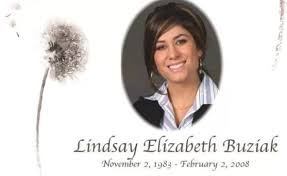 When I started privately investigating Lindsay’s murder, I was unprepared for her bizarre father. He’s been the drive to keep Lindsay’s memory alive by narcissistically placing himself front and center media-wise including his recent appearance on the Dr. Phil TV show. I was pathologically lied to and then personally attacked online by the dad. I had a real hard time coming to grip with how intentionally misleading he’s been in the years since his daughter was killed. It’s a sad and strange story on its own.
When I started privately investigating Lindsay’s murder, I was unprepared for her bizarre father. He’s been the drive to keep Lindsay’s memory alive by narcissistically placing himself front and center media-wise including his recent appearance on the Dr. Phil TV show. I was pathologically lied to and then personally attacked online by the dad. I had a real hard time coming to grip with how intentionally misleading he’s been in the years since his daughter was killed. It’s a sad and strange story on its own.
What I can say about Lindsay Buziak’s murder is that I may not be able to truthfully write the public story as the circumstances now sit. I have a lot of information about this awful mess, the motive for the crime and, with probable certainty, who the conspirators are. If I publish what I’ve learned and what people close to the story have candidly told me – to tell the truthful and accurate story – I might compromise an active police investigation and that can not happen.
What I can say about Lindsay’s case is she was a totally innocent victim of an elaborate conspiracy to frame her as a police agent. That was to cover up and protect a real police informant who double-crossed an arm of the Sinaloa Drug Cartel in a multi-million dollar cocaine loss. Yes, the story is that involved and complicated. I will also say, with probable certainty, the two people directly involved in stabbing Lindsay to death are a Mexican brother and sister pair who are now long gone from Canada. However, the co-conspirators who fed Lindsay to the killers are still active in the Victoria area. One of them checks my blog daily.
Moving on to other writing, I’ve spent the past few months digging into nerd-stuff like chemistry, biology and physics. I’ve also been snooping into philosophy, psychology, astronomy and anatomy. No, this is not some sort of weird enlightenment or cautious coming-out. It’s a serious look at the human condition centering on consciousness.
 I’m preparing a paper with the working title Interconnect – Finding Your Place in a Conscious Universe which is more for my own curiosity than anything else. I’ll share it on an upcoming blog post as a PDF download as it looks like it’s going to be fairly lengthy – probably 20-30K words. It’s kind of a “What’s the Meaning and Purpose of Life” which has been sixty years in the making. I was hoping to wrap it soon, but I got three new books for Christmas – Origin Story (A Big History of Everything), When The Earth Had Two Moons and Lonely Planet’s The Universe Travel Guide.
I’m preparing a paper with the working title Interconnect – Finding Your Place in a Conscious Universe which is more for my own curiosity than anything else. I’ll share it on an upcoming blog post as a PDF download as it looks like it’s going to be fairly lengthy – probably 20-30K words. It’s kind of a “What’s the Meaning and Purpose of Life” which has been sixty years in the making. I was hoping to wrap it soon, but I got three new books for Christmas – Origin Story (A Big History of Everything), When The Earth Had Two Moons and Lonely Planet’s The Universe Travel Guide.
I also want to share ongoing successes of my writer friends. First and foremost is Sue Coletta. If you regularly follow DyingWords.net, no doubt you’ll know Sue. We’ve collaborated on a few things, and I’ve watched Sue’s progression from her first book to her rise as a sought-after source for an upcoming true crime story commissioned by a major traditional publisher. In my opinion, Sue Coletta is one of the most talented and promising writers out there today.
Rachel Amphlett is another super-talent in the crime writing business. I had the pleasure of co-hosting an indie-publishing seminar with Rachel, and I have to say how impressed I am with her work not to mention her business savvy and drive. Rachel’s main stories are her Detective Kay Hunter series and her Dan Taylor espionage series. Rachel also writes stand-alone books in the crime thriller genre.
I’ve developed an online friendship with Caroline Mitchell. Caroline and I have something in common besides writing. She’s a retired detective from a UK police force who recommissioned herself as a crime writer. A really good and successful crime writer, I must say. Caroline has her DI Amy Winter books like The Secret Child and Truth and Lies which have been optioned for TV productions. Her stories Witness and Silent Victim also proved to be top bestsellers.
John Ellsworth is another writer I’ve got to know over the net. John is a recovering lawyer who writes legal thrillers. He tells me he set out to supplement his retirement income by a few hundred a month. Well, that took off on him. John is now one of the leading indie authors making Amazon money with his Thaddeus Murfee character.
While I’m name-dropping, have you heard of Adam Croft? Here’s a guy who’s done well for himself in the crime thriller world. Adam and I cross-blogged back in the old days when he wasn’t famous and I had hair – well before Adam became the number one book seller on all of Amazon with Her Last Tomorrow. Now Adam has sold nearly two million books and his list keeps growing.
And then there’s Joe Broadmeadow. Funny how old cops attract. Joe’s a retired captain from the East Providence, Rhode Island, detective division. He’s found his stride with true crime books like Choices – You Make ‘Em, You Own ‘Em and It’s Just The Way It Was. Joe’s also penned thrillers like Collision Course, Silenced Justice and A Change Of Hate.
 I have a few more writing projects planned for 2020. One is an article for the Royal Canadian Mounted Police (RCMP) Quarterly publication. An editor at the Quarterly is an former colleague of mine, and he asked me to contribute a piece on Post Traumatic Stress Disorder (PTSD) about how I personally coped after The Teslin Lake Incident where my close friend and partner, Mike Buday, was murdered beside me and I was nearly shot as well. This is part of a series the Quarterly is doing on modern approaches to managing operational stress injuries (OSI).
I have a few more writing projects planned for 2020. One is an article for the Royal Canadian Mounted Police (RCMP) Quarterly publication. An editor at the Quarterly is an former colleague of mine, and he asked me to contribute a piece on Post Traumatic Stress Disorder (PTSD) about how I personally coped after The Teslin Lake Incident where my close friend and partner, Mike Buday, was murdered beside me and I was nearly shot as well. This is part of a series the Quarterly is doing on modern approaches to managing operational stress injuries (OSI).
I’m also guesting a post on what detectives and writers have in common. This is for a very high-profile website catering to writers, not detectives. The site has been recognized as one of the top ten influencers in the writing business, and you’ll have to wait for April to see who this is.
On the writing business side, this coming year I plan to expand from publishing solely on Amazon. (Going Wide) You’ll soon find my indie works on Kobo, Nook, B&N, Apple and Google as eBooks. I’m also planning to offer most in print form and maybe a test on audio.
 Speaking of audio, I want to run this by you. I’ve been mulling the idea of taking my most popular blog posts and turning them into podcasts. Some of these posts have had thousands of reads and hundreds of shares. Podcasting seems to be a hit with folks who don’t want to spend the time reading but are ripe for listening while driving, walking or whatever. What do you think? Would you tune in to a DyingWords podcast?
Speaking of audio, I want to run this by you. I’ve been mulling the idea of taking my most popular blog posts and turning them into podcasts. Some of these posts have had thousands of reads and hundreds of shares. Podcasting seems to be a hit with folks who don’t want to spend the time reading but are ripe for listening while driving, walking or whatever. What do you think? Would you tune in to a DyingWords podcast?
Anyway, that’s what’s happening with Garry Rodgers’ writing for 2020. I hope you have a safe, healthy, happy, purposeful and prosperous new year. And thank you – thank you so much – for supporting my stuff! ~Garry






